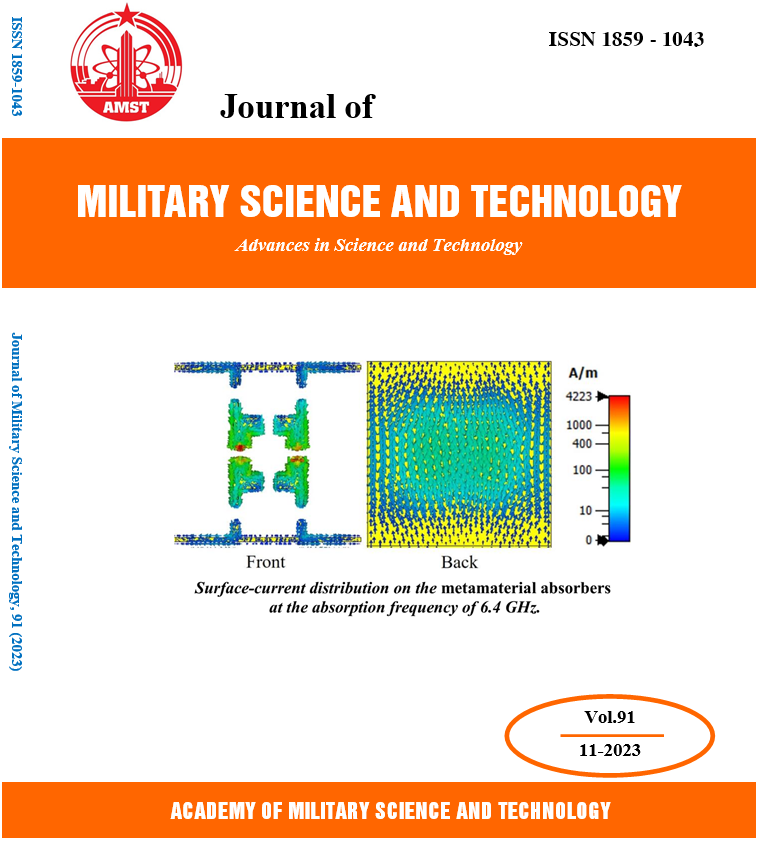A spike trains encoding and decoding solution for the spiking neural networks
755 viewsDOI:
https://doi.org/10.54939/1859-1043.j.mst.91.2023.28-34Keywords:
Spike encoding; Spike decoding; Spiking neural network; Latency encoding.Abstract
This paper proposes a spike train encoding and decoding solution to process input and output signals for the spiking neural networks. The efficiency of the proposed solution is verified by the experimental tasks: The XOR classification problem and the aerodynamic coefficients identification of an aircraft from the data sets are recorded from flights. The results show that the proposed encoding and decoding solution has a higher convergence rate to the set values, and the mean squared error smaller than another solution is introduced in this research.
References
[1]. Gerstner W., Kistler W. M., “Spiking nerual models: single neurons, populations, plasticity,” Cambridge University Press, Cambridge, (2002). DOI: https://doi.org/10.1017/CBO9780511815706
[2]. Filip Ponulak, Andrzej Kasinski, “Introduction to spiking neural networks: Information processing, learning and applications,” Acta Neurobiol Exp 2011, Vol.71, pp. 409–433, Poznan University of Technology, Poland, (2011).
[3]. R. A. Ahmed A. Abusnaina, "Spiking neuron models: a review," International Journal of Digital Content Technology and its Applications(JDCTA),Vol. 8, (2014).
[4]. Dayan. P, Abbott. L.F, “Theoretical Neuroscience,” Vol. 806, MIT, Cambridge, (2001).
[5]. William Bialek, Fred Rieke, Rob R. De Ruyter Van Steveninck, David Warland, “Reading a Neural Code,” Science, Vol. 252, (1991). DOI: https://doi.org/10.1126/science.2063199
[6]. Thorpe S, Delorme A, Van Rullen R, “Spike-based strategies for rapid processing,” Neural Netw 14, pp. 715–725, (2001). DOI: https://doi.org/10.1016/S0893-6080(01)00083-1
[7]. Helene Paugam-Moisy, Sander Bohte, “Computing with spiking neuron networks,” Handbook of Natural Computing, Springer-Verlag Berlin Heidelberg, (2012). DOI: https://doi.org/10.1007/978-3-540-92910-9_10
[8]. Rahib H.Abiyev, Okyay Kaynak, Yesim Oniz, “Spiking neural networks for identification and control of dynamic plants,” The 2012 IEEE/ASME International Conference on Advanced Intelligent Mechatronics, Kaohsiung, Taiwan, (2012). DOI: https://doi.org/10.1109/AIM.2012.6265983
[9]. Wenzhe Guo, Mohammed E. Fouda, Ahmed M. Eltawil, Khaled Nabil Salama, “Neural coding in spiking neural networks: a comparative study for robust neuromorphic systems,” Front. Neurosci, Vol. 15, (2021). DOI: https://doi.org/10.3389/fnins.2021.638474
[10]. Hopfield JJ, “Pattern recognition computation using action potential timing for stimulus representation,” Nature 376, pp. 33–36, (1995). DOI: https://doi.org/10.1038/376033a0
[11]. Jacques Gautrais, Simon Thorpe, “Rate coding versus temporal order coding: a theoretical approach,” BioSystems 48, pp.57–65, (1998). DOI: https://doi.org/10.1016/S0303-2647(98)00050-1
[12]. Thorpe. S, Gautrais. J, “Rank order coding,” In Bower, J.M. (ed.) Computational Neuroscience: Trends in Research, pp. 113–118. Springer, Boston, (1998). DOI: https://doi.org/10.1007/978-1-4615-4831-7_19
[13]. Hani Hagras, Anthony Pounds-Cornish, Martin Colley, Victor Callaghan and Graham Clarke, “Evolving spiking neural network controllers for autonomous robots,” Proceedings of the 2004 IEEE international Conference on Robotics & Automation New Orleans, (2004). DOI: https://doi.org/10.1109/ROBOT.2004.1302446
[14]. Nadia Adnan Shiltagh Al-Jamali, Hamed S. Al-Raweshidy, “Modified elman spike neural network for identification and control of dynamic system,” IEEE Access, Vol. 8, (2020). DOI: https://doi.org/10.1109/ACCESS.2020.2984311
[15]. Bohte, S.M., Kok, J.N., La Poutre, H, “Error-backpropagation in temporally encoded networks of spiking neurons,” Neurocomputing 48(1–4), 17–37, (2002). DOI: https://doi.org/10.1016/S0925-2312(01)00658-0
[16]. Xin, J., Embrechts, M.J, “Supervised learning with spiking neural networks,” In International Joint Conference on Neural Networks, Vol. 3, No. 3, pp. 1772–1777, (2001).
[17]. Ghosh-Dastidar, S., Adeli, H, “A new supervised learning algorithm for multiple spiking neural networks with application in epilepsy and seizure detection,” Neural Netw, 22(10), 1419–1431, (2009). DOI: https://doi.org/10.1016/j.neunet.2009.04.003
[18]. Xiurui Xie, Hong Qu, Guisong Liu, Malu Zhang, Jürgen Kurths, “An efficient supervised training algorithm for multilayer spiking neural networks,” Department of Computer Science and Engineering, University of Electronic Science and Technology of China, 611731, Chengdu, Sichuan, China. PLoS ONE 11(4): e0150329, (2016). DOI: https://doi.org/10.1371/journal.pone.0150329
[19]. Xu Y, Zeng X, Zhong S, “A new supervised learning algorithm for spiking neurons,” Neural computation, 25: 1472–1511, PMID: 23517101, (2013). DOI: https://doi.org/10.1162/NECO_a_00450
[20]. VInh, N. Q., Duc Thanh, N., Minh Dac, H., & Dang Khoa, T,“Identify aerodynamic derivatives of the airplane attitude channel using a spiking neural network,” International Journal of Aviation, Aeronautics, and Aerospace, 7(3), (2020). DOI: https://doi.org/10.15394/ijaaa.2020.1490







